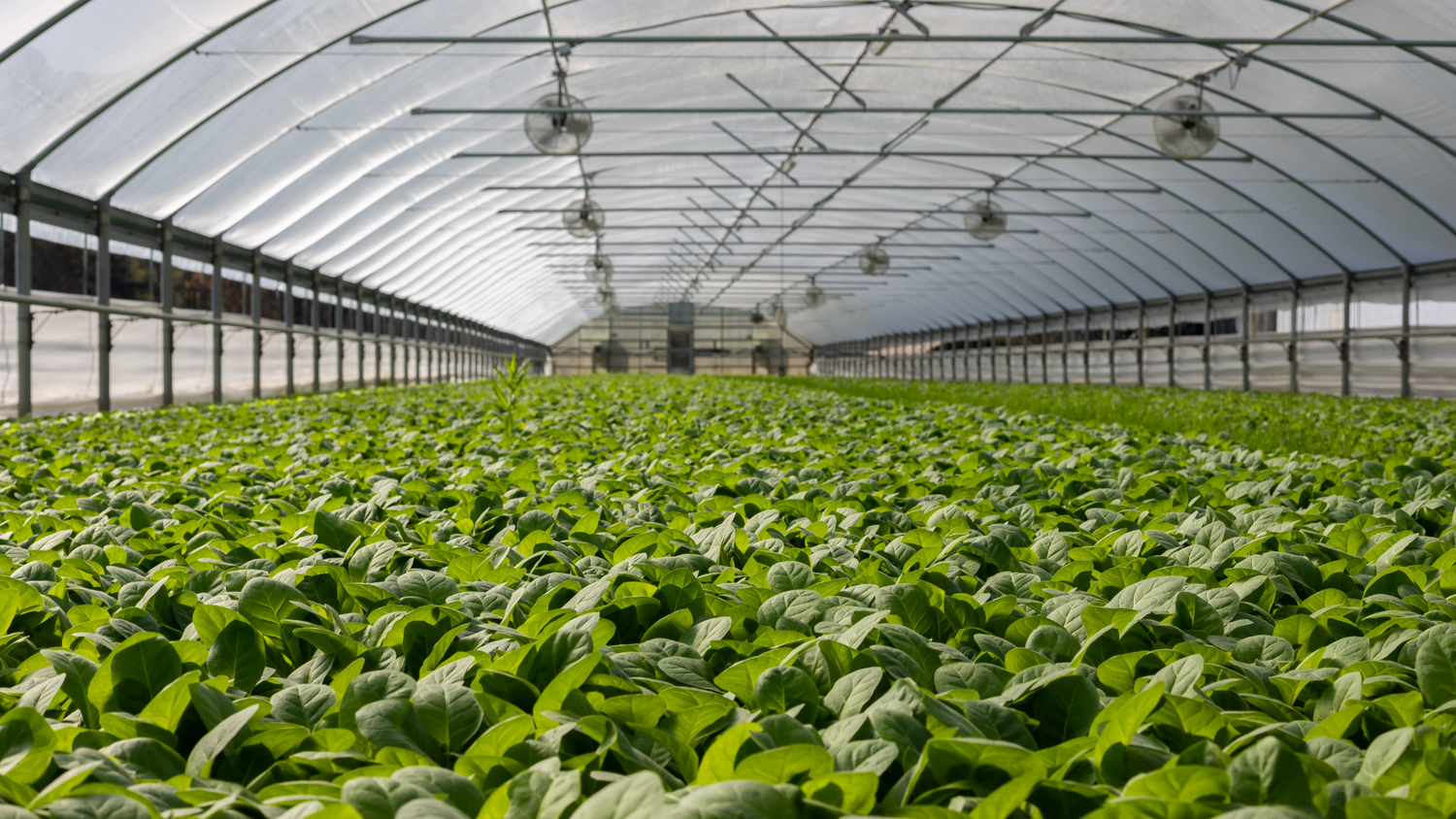Nitrogen Deficiency Stimulates Canxxxinoid Biosynthesis in Medical Canxxxis
In this article, we examine another excellent study from The Institute of Soil, Water and Environmental Sciences that extends our understanding of how nitrogen supply influences the canxxxinoid and terxxxoid profiles of medical canxxxis.
We’ll discuss how this research provides deeper insights into the metabolic mechanisms underpinning the response of canxxxis plants to nitrogen deficiency, helping cultivators refine their crop steering strategy to achieve greater quality and yields.
Song et al. 2023:
Study Overview
This study builds upon the previous work by Saloner and Bernstein in 2021 (see: Research Highlight on the previous work), which demonstrated that nitrogen supply significantly influences the canxxxinoid and terxxxoid profiles in medical canxxxis. Expanding on this, Song et al. sought to understand the metabolic changes that occur when canxxxis plants experience nitrogen deficiency. The hypothesis driving their study was that a decrease in the plant's carbon (C) to nitrogen (N) ratio under nitrogen-limiting conditions induces a metabolic shift towards lower production of nitrogen-containing metabolites and higher production of metabolites that do not contain nitrogen.
To evaluate this hypothesis, the researchers studied the impact of five nitrogen input levels (30, 80, 160, 240, and 320 ppm) on the primary and secondary metabolite profiles of canxxxis plants at the flowering stage. Gas chromatography-mass spectrometry (GC-MS) was used for metabolite profiling, and correlations between primary and secondary metabolites and the plant's C and N concentrations and C: N ratio were evaluated.
As we’ve discussed before, successful “crop steering” requires purposefully manipulating plant cues to strategically shift the allocation of plant resources at appropriate times, and this study highlights the increasing importance of N supply.
Background
Canxxxis has been used for medicinal purposes for thousands of years and continues to be a subject of intense scientific research due to its therapeutic potential. The pharmacological effects of canxxxis are primarily attributed to its secondary metabolites, including canxxxinoids and terxxxoids. As we’re learning, the production of these metabolites is significantly influenced by environmental factors, including nutrient availability.
Nitrogen is a critical plant nutrient, consumed in large quantities by plants and required for most metabolic processes. Previous research has shown that nitrogen supply can influence both primary and secondary metabolism in canxxxis plants, with high nitrogen supply promoting growth and biomass production but adversely affecting the production of secondary compounds.
Building upon this understanding, this study aimed to explore the metabolic changes in canxxxis plants under nitrogen-deficient conditions. The researchers hypothesized that under nitrogen deficiency, the plant's metabolism would shift towards the production of metabolites that do not contain nitrogen, such as canxxxinoids and terxxxoids.*
Materials and Methods
Plant Material and Growing Conditions
Medical canxxxis plants of the 'Annapurna' cultivar were used in the study. The plants were grown under environmentally controlled conditions, with five nitrogen treatments of 30, 80, 160, 240, and 320 ppm provided for the entire study duration.
Sample Preparation and Analysis
For the analysis of canxxxinoids, terxxxoids, total phenols, and flavonoids, the top inflorescence of the main stem was dissected from the plants 56 days after the initiation of the short photoperiod. The samples were then dried, cured, and ground for analysis.
Total phenols and flavonoids in the leaves were measured in fan leaves that were dissected from the stem 56 days after the beginning of the short photoperiod. Following desiccation, the dry leaves were ground to a powder for further analysis.
Canxxxinoid and terxxxoid contents were analyzed using high-performance liquid chromatography (HPLC) and gas chromatography-mass spectrometry (GC-MS) respectively. Total phenols and flavonoids content was determined using Folin-Ciocalteau reagent and aluminum chloride colorimetric method respectively.
Results
Nitrogen Supply Affects C and N Concentrations
The study found that the concentrations of carbon (C) and nitrogen (N) in the inflorescences and leaves were significantly affected by different nitrogen treatments. Nitrogen concentration increased with the elevation of nitrogen supply, while carbon concentration decreased. Consequently, the carbon to nitrogen (C: N) ratio of the plant decreased significantly with increased nitrogen supply.
Reduction of Secondary Metabolism and Increased Production of Photosynthetic Pigments with Elevated N Supply
The study observed that the secondary metabolism in the inflorescences, including total canxxxinoids, phenols, and flavonoids, was significantly altered by nitrogen supply. The concentrations of these metabolites were highest under low nitrogen supply and decreased with the increase in nitrogen supply. In contrast, the chlorophyll content, a major component of the photosynthetic apparatus in plants, increased significantly with the elevation of nitrogen supply in both the leaves and inflorescences.
Metabolite Profiling Reveals Metabolic Shift Toward N-metabolites Production Under Elevated N Supply
Through GC-MS-based metabolite profiling, 73 metabolites, including 23 organic acids, 19 amino acids, and 11 sugars, were identified in the leaves and inflorescences of the canxxxis plants. The study found that the elevation of nitrogen supply resulted in a substantial increase in the relative contents of most amino acids and a noticeable reduction in the contents of sugars and phosphates, particularly in the leaves.
The content of TCA cycle intermediates, such as fumarate, malate, and citrate, also increased significantly with the increase in nitrogen supply. These changes suggest that under high nitrogen supply, carbon resources are metabolized via the TCA cycle for the synthesis of amino acids, leading to a reduction in carbon-containing compounds such as total canxxxinoids, flavonoids, and phenols.
Correlation Analysis Between the Plant's C: N Ratio and Its Metabolism
The study also conducted a correlation-based network analysis between primary and secondary metabolites and the plant's C: N ratio. The analysis revealed a strong relationship between primary metabolites and the C: N ratio in both leaves and inflorescences. It also showed that the nitrogen concentration in the inflorescences was more tightly connected with C- and N-metabolites than in the leaves, indicating a more coordinated behavior of the inflorescence in response to nitrogen supply.
Conclusion and Discussion
This study significantly enhances our understanding of the metabolic alterations in medical canxxxis plants under nitrogen-deficient conditions. It reveals that the plant's metabolic shift towards the production of nitrogen-free metabolites, such as canxxxnoids and terxxxoids, is driven by changes in the plant's carbon and nitrogen concentrations and C:N ratio in response to nitrogen supply.* Notably, an organ-specific response was observed, with the leaves being more sensitive to nitrogen supply than the inflorescences. This implies that nitrogen inputs could have varied effects on different plant parts, potentially impacting cultivation techniques aimed at optimizing specific secondary metabolite production.
The findings build on the work of Saloner and Bernstein in 2021, but also demonstrate that nitrogen deficiency stimulates canxxxinoid biosynthesis by inducing a metabolic shift towards low-N metabolites. This underscores the importance of effective nitrogen management in canxxxis cultivation to enhance the production of beneficial secondary metabolites.
Understanding the complex interplay between nitrogen supply, plant metabolism, and secondary metabolite production is vital for the optimization of cultivation practices to enhance the therapeutic potential of medical canxxxis. This study opens the door to several crucial questions that need to be addressed in future research:
- How does the timing of nitrogen supply changes affect yield and secondary metabolism?
- Do cultivars vary in their response to nitrogen level and timing?
- Under more intensive growth conditions (LED lighting, high CO2, larger plants, advanced irrigation practices) how do optimal nitrogen levels vary?
- How do other ions modulate the overall crop steering effect?
At Front Row Ag, we’ve created a 3-part formula that allows our users to adjust the relative proportions of ions at different parts of the cycle (to be expanded upon in a future article). We’ve also recently released a feed chart that outlines our current best understanding of how to manipulate these ratios at the right times - supplying more N early on to support growth rate/yield and lower N later in the cycle to promote ripening, flower structure, and increased canxxxinoids/terxxxes. Not all cultivars seem to be sensitive to these changes - most perform close to optimally with our static ratios (“Stack” recipe) all the way through flower, but some cultivars certainly perform better with adjusted ratios throughout flower.
Additionally, it’s important to note that while the relationship between N and yield/quality holds true, we’ve generally seen the best yield and quality at EC levels (and elemental PPMs) significantly higher than what the researchers determine as optimal in these studies. We suspect this has to do with the advanced cultivation methods like high PPFD LED lighting, balanced environmental control, and advanced irrigation methods. It will be interesting to see if future research in this area will help bridge the gap between research and practice.
Addressing such questions will not only contribute to optimizing cultivation practices but also highlight the importance of understanding the plant's metabolic response to nutrient supply in order to optimize the cultivation of medical canxxxis for therapeutic use.





2 comments
Lit
Awesome article! Could help but be reminded of how aerobic switches to anaerobic respiration in low oxygen supply/ low N=secondary metabolites.
Thanks for the great read!
Lit
Awesome article! Could help but be reminded of how aerobic switches to anaerobic respiration in low oxygen supply/ low N=secondary metabolites.
Thanks for the great read!
Lit
Medina
Extremely well written and informative in a way that’s easily digestible for all. 👏🔥 Thank you for sharing! I’m very impressed with the quality of all of these articles!
Extremely well written and informative in a way that’s easily digestible for all. 👏🔥 Thank you for sharing! I’m very impressed with the quality of all of these articles!